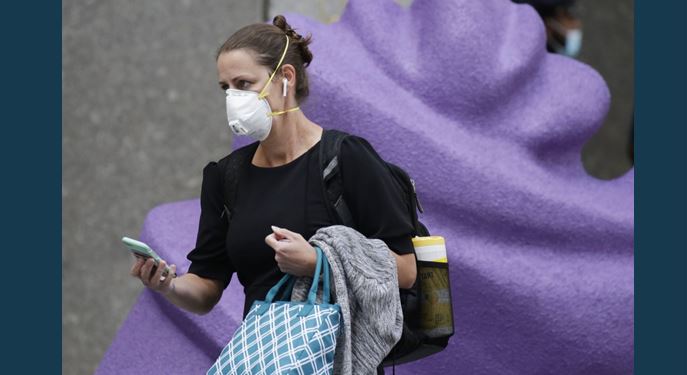
Sept. 3 (UPI) — The U.S. Centers for Disease Control and Prevention notified states to be ready to possibly distribute a COVID-19 vaccine as soon as late October.
The agency sent letters to state officials last week, reported The New York Times, which viewed the documents. The CDC confirmed the advisory to CNN on Wednesday.
The CDC warned states that initial supplies of the vaccine “may be constrained.” The documents spell out that certain groups should be prioritized to receive a vaccine, including healthcare and essential workers, long-term care facility residents and staffers, and national security populations.
News of the letters came one day after Dr. Anthony Fauci, director of the National Institute of Allergy and Infectious Diseases, said a vaccine could be available earlier than expected if current clinical trials produce significantly positive results.
He told Kaiser Health News that an independent board could end a trial weeks early if the cumulative results are overwhelmingly positive or negative. He added that the board would have a “moral obligation” to end the trial early if data is so good that “you can [conclude] it’s safe and effective.”
Several vaccines are in development worldwide, including at Pfizer, Novavax, Moderna and AstraZenica.
Data compiled by the Center for Systems Science and Engineering at Johns Hopkins University showed September started with 43,200 new cases nationwide on Tuesday — an increase of nearly 10,000 over Monday’s figure — and almost 1,100 new deaths.
While the new case figure was higher, it was still below the August average of 47,300 cases per day. Tuesday’s deaths topped 1,000 for the first time in several days.
Since the start of the pandemic, there have been 6.09 million cases and 185,100 deaths in the United States, according to Johns Hopkins data.
Meanwhile, Minnesota reported the first death associated with the Sturgis Motorcycle rally, an annual event that brought more than 400,000 people to South Dakota.
Kris Ehresmman, infectious disease director at the Minnesota Department of Health, told The Washington Post the man in his 60s was hospitalized in intensive care after his return from the rally. He had underlying health conditions.
More than 260 cases in 11 states have been tied to the event.
Minnesota officials reported 761 new cases and seven new deaths Tuesday, bringing its total case count to more than 77,000 and deaths to 1,830.
According to The New York Times’ coronavirus tracker, Minnesota is one of several states where daily cases per capita are on the rise.
In Florida, Gov. Ron DeSantis on Tuesday ordered long-term care facilities to reopen to visitors after nearly six months of lockdown.
“It’s a tragedy that [the lockdown] happened, but we had to do it,” DeSantis said in an emotional press briefing. “It weighs on me to think of the people who passed away…without being able to say a final goodbye.”
Protocols still require all nursing home visitors to wear protective equipment and pass a temperature check and screening for COVID-19 symptoms. However, they do not require visitors to test negative for entry.
AARP Florida voiced alarm at DeSantis’ decision to not require negative tests for visitors.
“AARP recognizes this step will be welcomed by those who have seen spouses and parents suffer significantly from the isolation of the last five months,” state director Jeff Johnson said in a statement. “We all hope that this approach works. But we continue to ask: Should we be trusting our older residents’ safety to hope?”
Miami-Dade Public Schools, meanwhile, said a cyberattack Tuesday made it difficult for students and teachers to access remote learning platforms. It was the second day in the row the school district had technological problems. The district opened the school year with online classes on Monday.
“There was a malicious attempt, malicious well-orchestrated complex attempt at derailing the connection which is essential for our students and teachers,” Superintendent Alberto Carvalho said.
The Florida Department of Health reported about 2,600 new cases Tuesday, pushing the state total past 633,000. Only California and Texas have had more. Daily cases in Florida have been on the decline since mid-July.
In Iowa, the state’s seven-day average of new cases set a new record Tuesday (about 1,200) — more than doubling over the past 10 days.
The state has the fastest-growing outbreak in the nation, according to the Harvard Global Health Institute, at nearly 37 new cases per 100,000 residents.
The pandemic is easing in the South and West, however, with seven of nine Sun Belt states seeing decreases in the number of deaths attributed to COVID-19, new cases and the percentage of tests coming back positive, USA Today reported.





